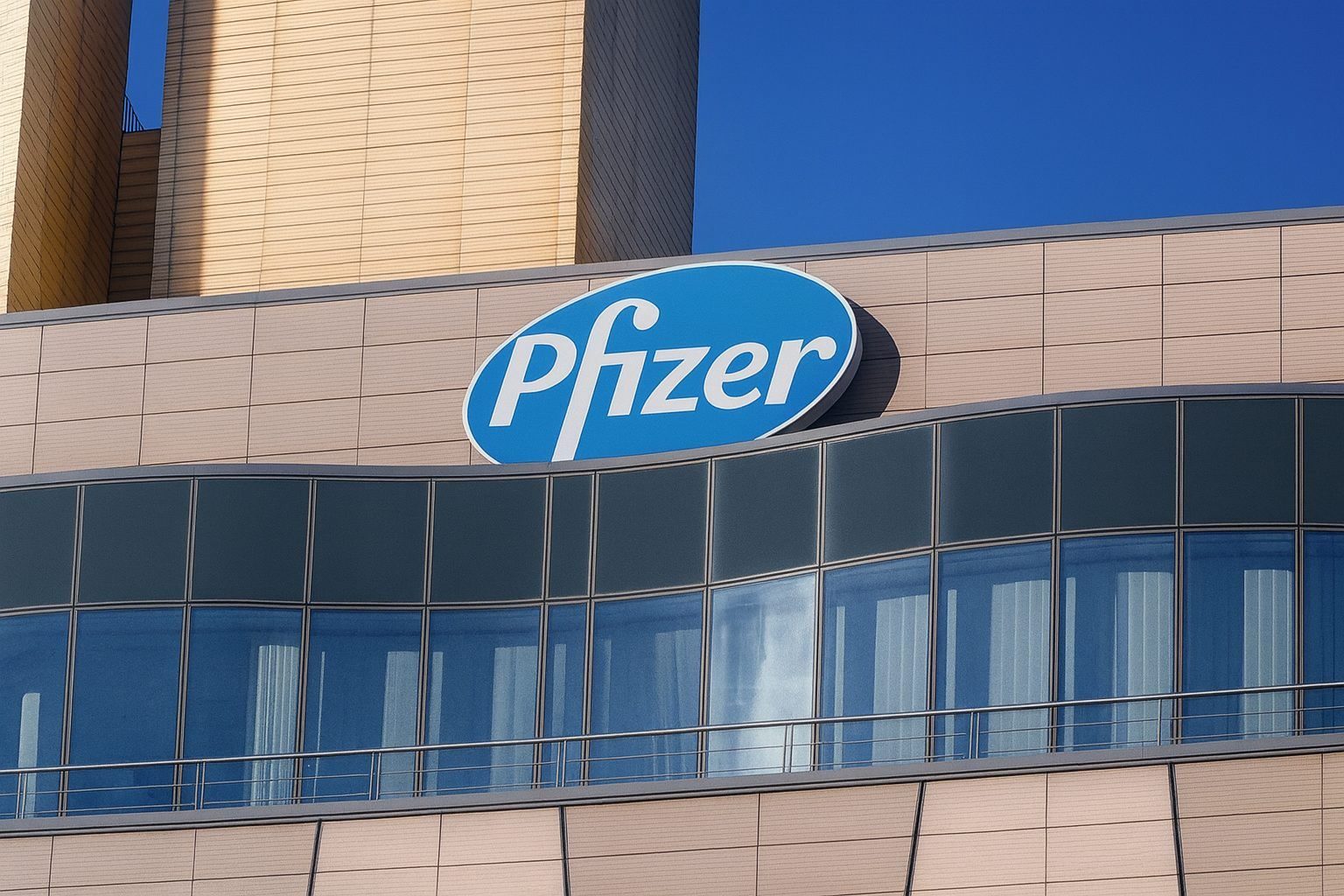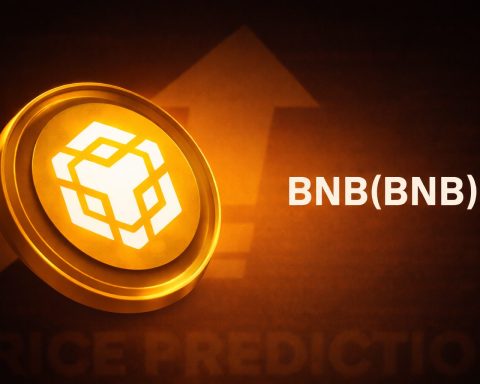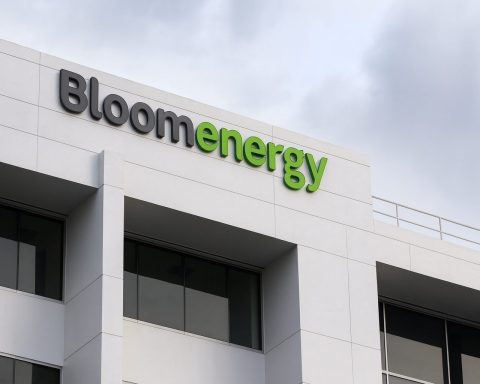As investors head into the Tuesday, November 25 session, Pfizer Inc. (NYSE: PFE) remains one of Wall Street’s most closely watched healthcare names. After a brutal comedown from its pandemic-era highs, the drugmaker is trying to convince the market that a new growth story is taking shape around obesity drugs, oncology and a large – and growing – dividend.
As of late Monday trading, Pfizer shares were changing hands around $25 per share, giving the company a market value of roughly $143 billion and placing the stock in the middle of its 52‑week range between $20.92 and $27.69. [1] At that price, Pfizer’s annual dividend of $1.72 per share implies a yield of about 6.8%, one of the richest payouts in big pharma. [2]
Below is what’s driving PFE stock right now – from earnings and guidance to the Metsera obesity acquisition and the state of its vaccines and oncology franchises.
Pfizer (PFE) stock price today and valuation snapshot
- Recent price: Around $25 per share as of November 24, 2025
- 52‑week range: $20.92 (low) to $27.69 (high) [3]
- Market cap: About $143 billion [4]
- Dividend (annualized): $1.72 per share, yield ~6.8–7% [5]
- Valuation: Trailing P/E ~14.6; forward P/E ~8.4, based on consensus 2025 earnings estimates [6]
- Volatility: Beta around 0.42 – significantly less volatile than the overall U.S. market [7]
Over the last 12 months, Pfizer shares are down roughly 4%, while the S&P 500 is up around 10%, underscoring how far sentiment has lagged the broader market. [8] Yet technically, the picture has improved: PFE has been trading above both its 50‑day and 200‑day moving averages since early November, a setup many traders view as the early stages of a potential uptrend. [9]
Q3 2025 earnings: EPS beat, non‑COVID growth, COVID drag
Pfizer’s latest quarter, reported on November 4, has set the tone for how investors are viewing PFE into year‑end.
Headline numbers (Q3 2025): [10]
- Revenue: $16.7 billion (down 6% reported and 7% operationally vs. Q3 2024)
- Non‑COVID portfolio: Up 4% operationally
- Reported diluted EPS: $0.62
- Adjusted diluted EPS: $0.87, beating analyst expectations by more than 30%
- 2025 revenue guidance: Reaffirmed at $61–64 billion
- 2025 adjusted EPS guidance: Raised and narrowed to $3.00–$3.15 per share
- Cost savings: On track for about $7.2 billion in net cost savings by the end of 2027
The big story continues to be the divergence between COVID and non‑COVID products. Demand for the COVID vaccine Comirnaty and antiviral Paxlovid is sliding as the virus becomes endemic and vaccination guidance narrows.
According to management and follow‑up analysis of the earnings release: [11]
- Comirnaty sales fell 19% year over year in Q3 to about $1.15 billion.
- Paxlovid revenue dropped 55% to roughly $1.2 billion, as infection rates declined and the company faced tough comparisons against prior government stockpiling orders.
- Within vaccines, the Prevnar pneumococcal franchise slipped about 3% to $1.7 billion, and Abrysvo (its RSV shot) saw a 22% decline to about $279 million, with U.S. demand particularly weak even as ex‑U.S. sales grew.
Strip out COVID, though, and Pfizer’s innovative medicines portfolio is growing:
- Eliquis, co‑marketed with Bristol Myers Squibb, jumped 22% to about $2 billion.
- The Vyndaqel/Vyndamax cardiomyopathy franchise rose 7% to nearly $1.6 billion.
- Migraine medicine Nurtec ODT/Vydura climbed 22% to roughly $412 million. [12]
CEO Albert Bourla and CFO Dave Denton emphasized that while COVID products remain a headwind, the core non‑COVID portfolio is doing what it needs to do – grow in the low‑to‑mid single digits – to support the company’s guidance and help bridge an upcoming patent cliff. [13]
A nearly 7% dividend yield is back in focus
For many investors, Pfizer is now as much a dividend story as a growth one.
In October, the board declared another $0.43 per‑share quarterly dividend for Q4 2025, payable December 1 to shareholders of record on November 7. That payment represents Pfizer’s 348th consecutive quarterly dividend – a streak spanning roughly 87 years. [14]
Pfizer has also marked 16 straight years of annual dividend increases, according to its own investor communications. [15] With the share price depressed, that payout translates into a yield hovering between 6.7% and 7%, among the highest in large‑cap healthcare. [16]
There are two key questions investors keep asking about the dividend:
- Is it covered by earnings?
Based on trailing 12‑month numbers, Pfizer’s payout ratio has looked high – around 90% of earnings, by some estimates. [17]
However, using the raised 2025 adjusted EPS guidance of $3.00–$3.15, the annual dividend of $1.72 would represent a more comfortable mid‑50% payout ratio, leaving room for R&D investment, debt reduction and business development. [18] - Is it sustainable beyond 2027?
Analysts and commentary pieces have flagged that Pfizer faces a sizeable $17–$18 billion patent cliff between 2026 and 2028, meaning key drugs will face generic competition and pricing pressure. [19] Management’s response is a mix of aggressive cost cutting (the $7.2 billion savings program), deal‑making and a focus on high‑value therapeutic areas like oncology and obesity.
So far, the company has shown no willingness to touch the dividend; instead, it has paused share repurchases and is prioritizing debt reduction and pipeline investment. The Q3 report noted no buybacks in 2025 to date, with $3.3 billion still authorized but not assumed in guidance. [20]
Metsera deal puts Pfizer back in the obesity drug race
Perhaps the most important strategic move of 2025 for Pfizer is its bid to re‑enter obesity treatments – one of the fastest‑growing markets in all of medicine.
Five months after scrapping development of its own once‑daily oral obesity pill due to side‑effect concerns, Pfizer announced in September that it would acquire Metsera Inc., a development‑stage obesity biotech. [21]
Key elements of the Metsera transaction:
- Initial agreement valued at about $4.9 billion, or $47.50 per share in cash, plus up to $22.50 per share in contingent payments tied to clinical and regulatory milestones. [22]
- After a highly public bidding war with Novo Nordisk, Pfizer sweetened its offer. Metsera ultimately accepted a deal worth up to $86.25 per share – $65.60 in cash plus up to $20.65 in contingent value rights – implying a potential transaction size in the neighborhood of $10 billion. [23]
- On November 13, Pfizer said it had completed the acquisition, calling Metsera’s assets “highly differentiated clinical‑stage obesity candidates” that could reshape the treatment landscape and complement its internal medicine portfolio. [24]
Metsera brings multiple experimental weight‑loss and diabetes drugs, including:
- A once‑monthly GLP‑1 injectable that has shown strong early weight‑loss data.
- An oral GLP‑1 candidate and an amylin‑targeting therapy, which together could help Pfizer compete with incumbents like Novo Nordisk (Wegovy/Ozempic) and Eli Lilly (Zepbound/Mounjaro). [25]
For PFE shareholders, the Metsera deal is a double‑edged sword: it significantly boosts Pfizer’s long‑term growth optionality but adds to integration risk and near‑term leverage – one reason the company simultaneously tapped the bond market for $6 billion in new notes across several maturities this month. [26]
Oncology: building on Seagen, PADCEV and 3SBio
Obesity isn’t Pfizer’s only big swing. Oncology continues to be a core pillar of its post‑COVID strategy.
Following the $43 billion acquisition of Seagen in 2023, Pfizer now controls a suite of antibody‑drug conjugates (ADCs) and targeted therapies, including Padcev, Adcetris, Tivdak and Tukysa. [27] The company has set an ambition to double the number of patients treated with its cancer medicines by 2030, backed by more than 50 oncology programs in development. [28]
At the ESMO 2025 oncology congress, Pfizer highlighted a wave of data across its portfolio, including: [29]
- Padcev + Keytruda (with partner Merck) delivering “unprecedented” event‑free survival data in muscle‑invasive bladder cancer, potentially redefining the standard of care in patients who are ineligible for cisplatin chemotherapy.
- Final overall survival results from the EMBARK trial for prostate cancer drug Xtandi in non‑metastatic, high‑risk patients.
- Updated Phase 2 data for Braftovi + Mektovi in BRAF‑mutant metastatic lung cancer.
Meanwhile, Pfizer is also extending its pipeline through partnerships. In May, it signed an exclusive licensing agreement with China‑based 3SBio for SSGJ‑707, an experimental cancer drug being studied in several tumor types. [30] The deal could be worth up to $6 billion, including $1.25 billion upfront and up to $4.8 billion in milestone payments, and gives Pfizer exclusive rights to develop and market the drug outside China. [31]
Taken together, Seagen, Metsera and 3SBio underscore how aggressively Pfizer is using its balance sheet to rebuild growth beyond COVID.
Vaccines under pressure: COVID and RSV reset
Despite being a pioneer in mRNA vaccines, Pfizer’s vaccines division is under pressure.
Q3 2025 data showed that Prevnar, Abrysvo and Comirnaty all declined year over year, mainly due to a difficult U.S. vaccination environment:
- A narrower CDC recommendation for COVID boosters in the U.S. has reduced the eligible population for Comirnaty, even as the company launched an updated LP.8.1‑adapted formulation. [32]
- RSV shot Abrysvo faced what management called a “more difficult‑to‑activate” population entering the third RSV season, though Pfizer still holds roughly 59% market share in U.S. RSV vaccines. [33]
- For Prevnar, U.S. sales were weak while ex‑U.S. demand grew, leading to a modest global decline. [34]
Removing COVID, Pfizer said its branded medicines portfolio grew 4% operationally during Q3, meaning the core business is healthy even as vaccines reset from pandemic peaks. [35] Still, the company must show that new launches – in RSV, meningococcal disease, migraine and inflammatory conditions – can offset continued erosion in COVID and, eventually, major patent expirations.
Balance sheet, debt financing and cost‑saving efforts
Pfizer’s acquisitions and pandemic wind‑down have left investors laser‑focused on its balance sheet.
- The company now sports an enterprise value near $190 billion, according to recent estimates, versus a market cap of about $143 billion – implying substantial net debt. [36]
- To maintain financial flexibility as it absorbs Seagen and Metsera, Pfizer completed a $6 billion public notes offering in late November, spread across multiple maturities. [37]
- Management reiterated that no share repurchases are planned in 2025, and that reducing leverage is a priority once the current acquisition wave is digested. [38]
On the cost side, Pfizer’s restructuring program is central to its story. The company expects to deliver about $7.2 billion in net cost savings by the end of 2027, up from earlier targets, through headcount reductions, portfolio rationalization and network optimization. [39]
Those savings, combined with stabilizing COVID demand and growth in non‑COVID products, are key to Pfizer’s plan to bring operating margins back toward pre‑pandemic levels while still funding a large dividend and R&D budget.
How Wall Street sees PFE stock now
Analysts remain divided on Pfizer, and that shows in the stock’s performance.
- Consensus rating: “Buy,” with an average price target around $28.5, implying roughly 13% upside from current levels. [40]
- 1‑year performance: PFE is down about 4%, while the S&P 500 is up around 10%. [41]
- Longer‑term: Shares are still down almost 50% over the last three years as the market repriced Pfizer’s post‑pandemic earnings power. [42]
Some research outlets argue that Pfizer is now undervalued, pointing to its low forward P/E, hefty yield and large pipeline; one recent note assigned a price target near $33, implying more than 30% potential upside over the next 12–18 months. [43]
Others are more cautious. A Trefis analysis published November 24 concluded that rival Johnson & Johnson looks like a better pick, citing J&J’s stronger recent growth, higher margins and less reliance on volatile COVID franchises. That piece noted that JNJ shares are up almost 45% year to date, while PFE is down about 6%. [44]
Dividend‑focused commentators, meanwhile, highlight Pfizer as a “high‑yield haven” but also warn that sustaining a near‑7% payout will require successful execution on cost cuts and pipeline launches through the late 2020s. [45]
What to watch next for Pfizer stock
For investors following PFE today, several catalysts and risk factors stand out:
- Obesity pipeline milestones. Any early‑ or mid‑stage data readouts from Metsera’s GLP‑1 and amylin candidates, as well as regulatory clarity on trial design, will shape expectations for Pfizer’s share of the massive obesity market. [46]
- Oncology approvals and label expansions. Additional approvals or guideline changes for PADCEV, Xtandi, Tivdak and other Seagen‑sourced assets could help offset losses elsewhere and validate Pfizer’s oncology thesis. [47]
- COVID and RSV utilization trends. A surprise winter COVID wave or stronger RSV season could temporarily boost vaccine and antiviral sales, though management has framed COVID demand as structurally lower than in prior years. [48]
- Progress on cost savings and de‑leveraging. Quarterly updates on the $7.2 billion cost‑cut program, debt metrics and decisions around future buybacks will feed into valuation debates. [49]
- Patent‑cliff mitigation. Investors will be watching how quickly newer launches – from migraine (Nurtec) to immunology and oncology – grow to replace revenue from drugs that lose exclusivity between 2026 and 2028. [50]
Bottom line
On November 25, 2025, Pfizer looks like a company in the middle of a complicated transition. The pandemic boom is over, vaccines are resetting, and a sizable patent cliff lies ahead. At the same time, the company is leaning hard into obesity and oncology, tightening its cost base and leaning on a dividend that yields close to 7% – a combination that some see as a value opportunity and others as a value trap.
For now, Pfizer’s story is less about quick share‑price gains and more about whether management can turn today’s high yield and loaded pipeline into sustainable, post‑COVID earnings growth.
Disclosure: This article is for informational purposes only and does not constitute financial, investment or trading advice. Always do your own research and consider consulting a licensed financial professional before making investment decisions.
References
1. stockanalysis.com, 2. stockanalysis.com, 3. stockanalysis.com, 4. stockanalysis.com, 5. stockanalysis.com, 6. stockanalysis.com, 7. stockanalysis.com, 8. finance.yahoo.com, 9. www.nasdaq.com, 10. s206.q4cdn.com, 11. www.fiercepharma.com, 12. www.fiercepharma.com, 13. s206.q4cdn.com, 14. www.pfizer.com, 15. insights.pfizer.com, 16. markets.chroniclejournal.com, 17. www.nasdaq.com, 18. s206.q4cdn.com, 19. www.ainvest.com, 20. s206.q4cdn.com, 21. apnews.com, 22. www.pfizer.com, 23. www.reuters.com, 24. www.pfizer.com, 25. trial.medpath.com, 26. za.investing.com, 27. finviz.com, 28. www.pfizer.com, 29. www.pfizer.com, 30. www.investopedia.com, 31. www.investopedia.com, 32. s206.q4cdn.com, 33. www.fiercepharma.com, 34. www.fiercepharma.com, 35. www.fiercepharma.com, 36. stockanalysis.com, 37. za.investing.com, 38. s206.q4cdn.com, 39. s206.q4cdn.com, 40. stockanalysis.com, 41. finance.yahoo.com, 42. simplywall.st, 43. seekingalpha.com, 44. www.trefis.com, 45. www.aol.com, 46. www.statnews.com, 47. www.pfizer.com, 48. www.fiercepharma.com, 49. s206.q4cdn.com, 50. www.fiercepharma.com







